A secret ingredient to rich umami taste, dried shrimp contributes to many delicious dishes. Here’s a how-to guide covering everything you need to know about it.
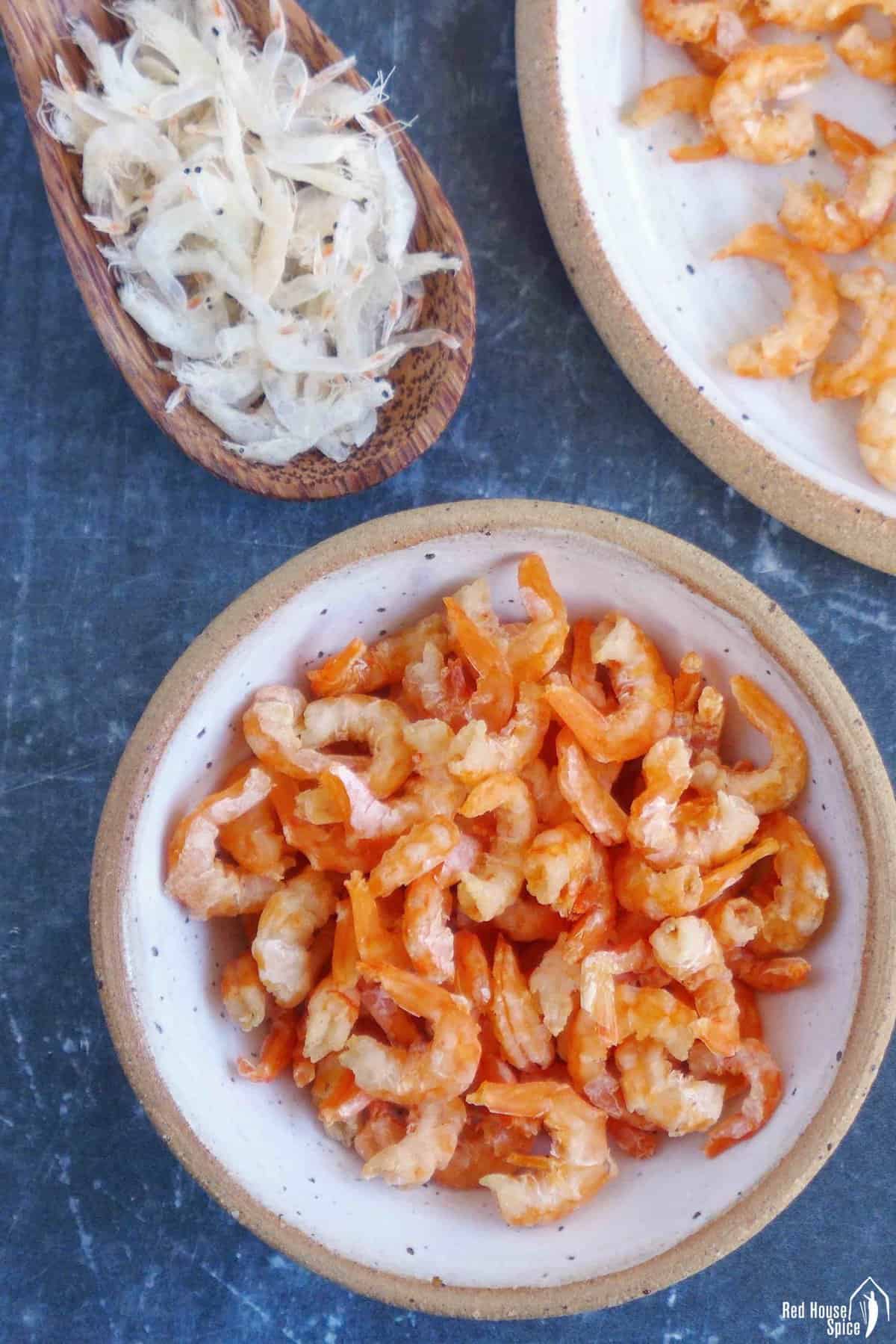
Jump to:
What is dried shrimp
Essentially, dried shrimp are sun-dried or baked (after being boiled) shrimp that has been completely or partially dehydrated. They are not used as the star ingredient of any dish, but they play an important role that influences the taste of many classics.
To me, it is like an “unsung hero” in dishes. Although it’s easily ignored due to its small size (often finely chopped), the flavor contribution it offers rarely goes unnoticed.
Similar to popular Asian ingredients like fish sauce or shrimp paste, dried shrimp lends dishes a distinctive taste of umami (Xiān Wèi/鲜味), aka savoriness, one of the five basic tastes. You can use it to pair any ingredient, but I find it shines exceptionally well in dishes that are mainly made with plant-based ingredients, e.g. Tofu and Vegetable Soup, Turnip Cake, and more.
Two types
There are two types of dried shrimp used in Chinese cuisine: regular ones and papery ones.
Regular dried shrimp
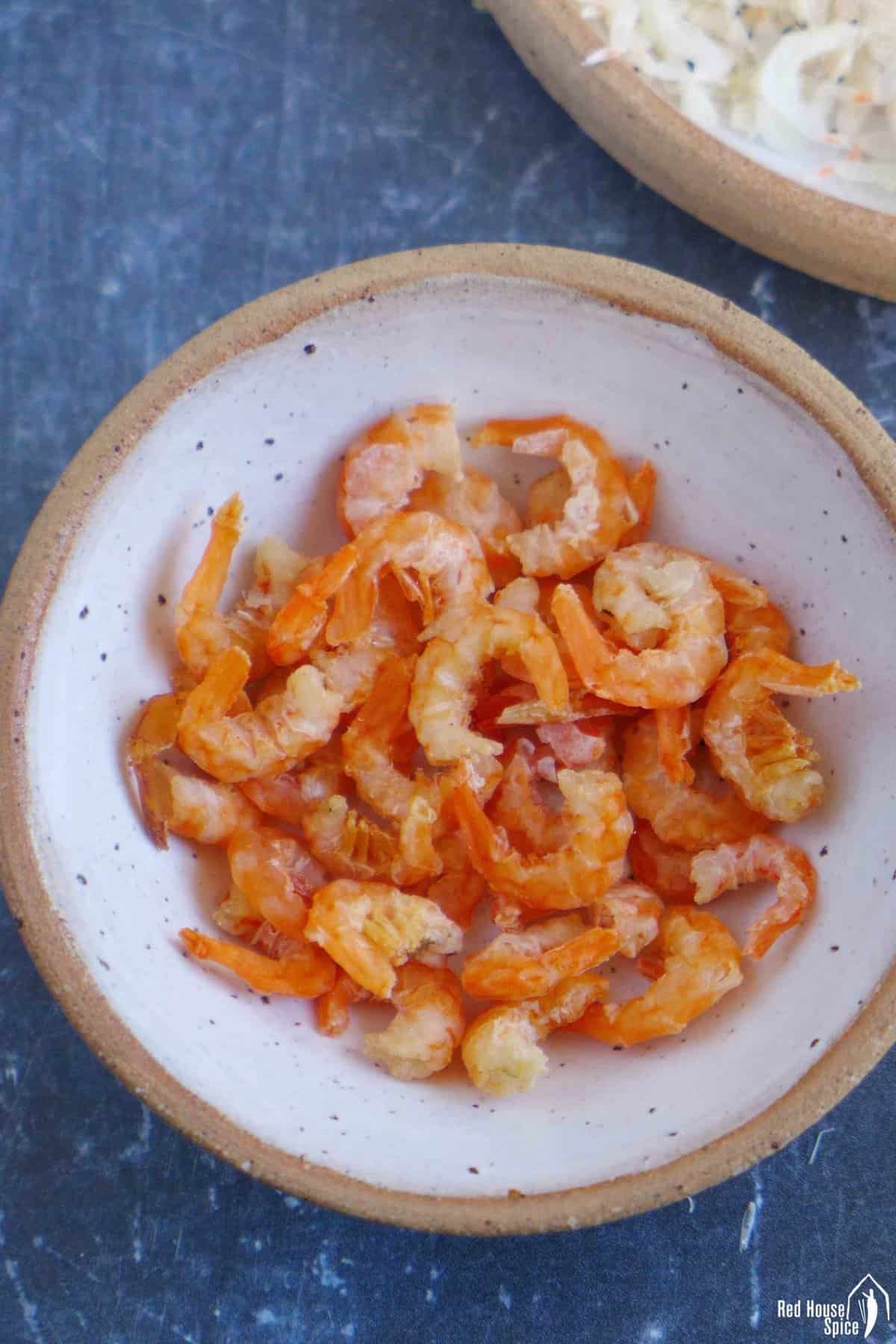
The most common one is known as Xiā Mǐ/虾米, Hǎi Mǐ/海米, or Gān Xiā Rén/干虾仁. They’re orange-looking, firm to the touch, and have their heads and most of the skin removed.
They come in different sizes, ranging from ⅓ to 1 inch (1-2½ cm). The bigger ones are usually more pricey, but I find smaller ones are equally good in flavor.
Papery dried shrimp
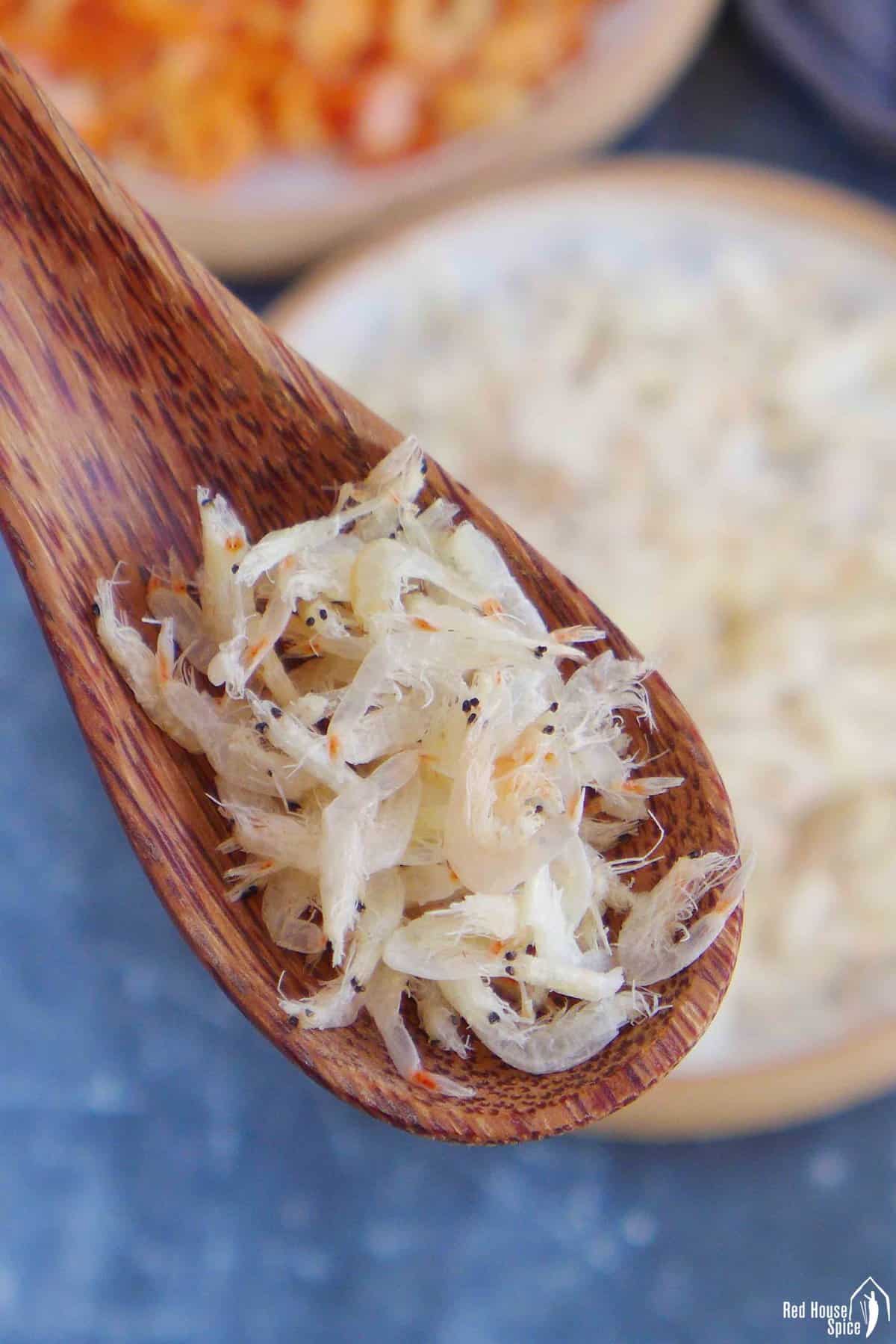
This type is known as Xiā Pí/虾皮, which means “shrimp skin” literally. They are tiny, beige-colored shrimp that have heads and tails intact. They don’t look as dry or firm as the regular version and have a crispy texture.
In terms of flavor, papery dried shrimp taste milder than the regular ones and have a sweet undertone that I really like. They can be used directly without soaking.
How to use
Dried shrimp can be incorporated into all types of dishes cooked in various ways: soups, broth, dumpling fillings, stir-fries, fried rice, fried noodles, braised or steamed dishes, and more.
They are usually called for in small quantities, but the flavor they lend to dishes goes a long way. Here are a few general rules to follow when using them:
- Rehydrate them beforehand if using the regular ones (learn more in the next section).
- Papery ones can be used directly without soaking.
- They can be ground, chopped up, or added to dishes whole for extra texture.
- Frying them in a little oil can help intensify their flavor.
Related dishes
The following recipes on the blog are great examples of using this flavorful ingredient:
How to rehydrate
Regular dried shrimp needs to be rehydrated before cooking. This process helps to release their aroma. Also, you’ll find it much easier to chop the softened ones into small pieces.
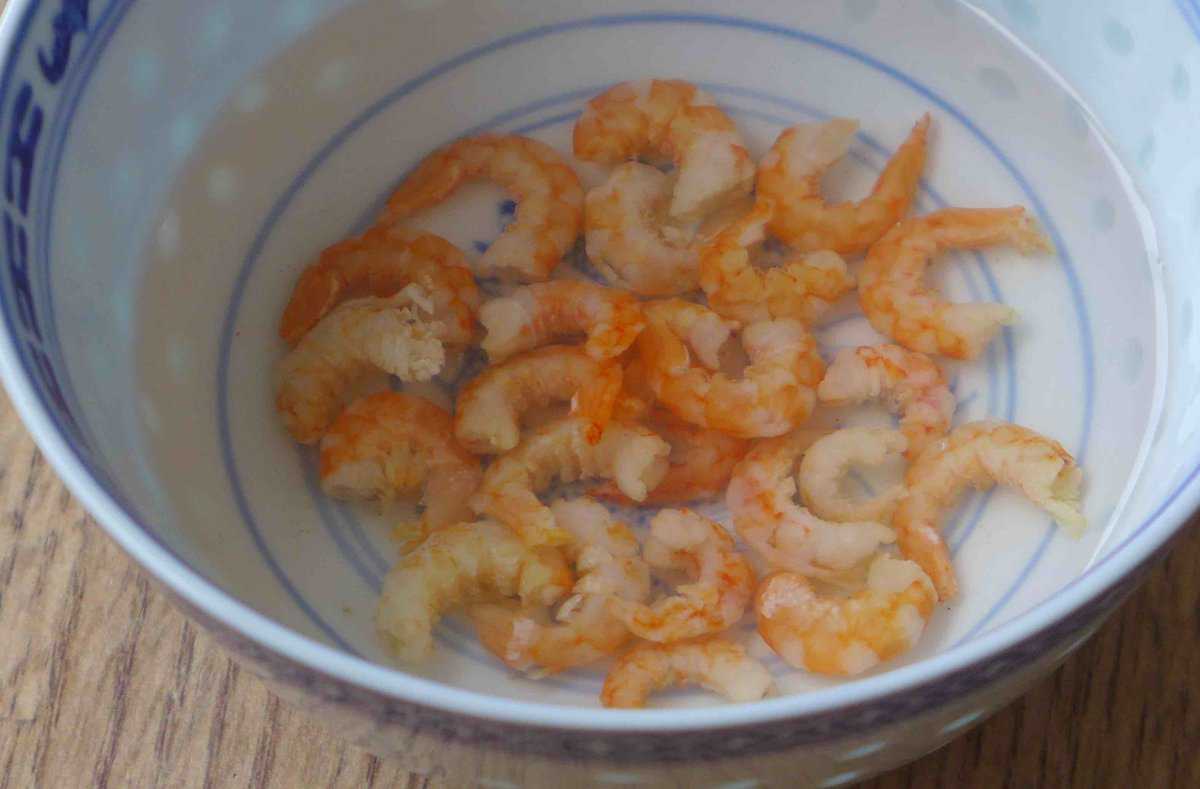
- In a small bowl, add the amount of dried shrimp that a recipe calls for, then pour in hot water enough to fully submerge the shrimp. Leave to soak for 10 minutes or so until they become plump and softer.
- You can either use the rehydrated shrimp in whole, if they’re quite small in size or cut them into finer pieces.
Tip: Do not discard the water in which the dried shrimp has been soaked. It’s full of flavor and thus can be added to the dish you’re cooking. This is similar to how you’d use the soaking water for shiitake mushrooms.
How to purchase
Dried shrimp can be found in Chinese/Asian grocery stores. It’s usually in plastic packaging and kept in either the chilled or frozen food sections. Some online shopping platforms, such as Amazon, also have it in stock.
Good quality ones have uniform size and color. The regular version should look vibrantly orange, and the papery type should have its entire body in whole (head and tail undamaged).
How to store

After you open the package, transfer the dried shrimp to an airtight container and store it in the refrigerator to maintain its freshness. Use it up in two months.
If you have bought a large amount, divide them into small portions and freeze in separate airtight bags. Consume before its expiry date.
How to substitute
If you find it hard to source dried shrimp, here are a few substitute options:
- Dried scallops (Gān Bèi/干贝)
- Shrimp paste (Xiā Jiàng/虾酱)
- Fish sauce (Yú Lù/鱼露)
No matter which one you use, make sure you limit its quantity. All of them have a rather concentrated flavor and are high in sodium.
📋 Recipe
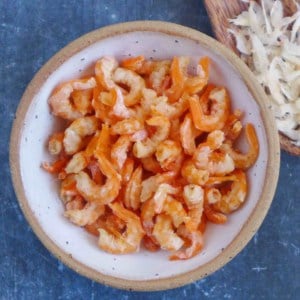
How to prepare dried shrimp
Ingredients
- Regular dried shrimp - Xiā Mǐ/虾米, Hǎi Mǐ/海米
- Papery dried shrimp - Xiā Pí/虾皮
Instructions
If using regular dried shrimp
- Rinse dried shrimp under running water. Drain then put into a small bowl. Add hot water enough to fully submerge the shrimp.
- Leave to soak for 10-20 minutes, depending on their size, until they become a little more plump and softer.
- Following the instructions of the recipe you use, you may use them whole, chopped small, minced, or mashed into a paste.
If using papery dried shrimp
- You don’t need to rehydrate papery dried shrimp. Following the instructions of the recipe you use, you may use them whole, finely chopped, or minced.
To store
- Keep dried shrimp in airtight containers or bags. Store in the refrigerator for up to two months.
- You may also freeze them, ideally in small batches. Defrost in the refrigerator before using. Consume before the expiry date.
NUTRITION DISCLOSURE: Nutritional information on this website is provided as a courtesy to readers. It should be considered estimates. Please use your own brand nutritional values or your preferred nutrition calculator to double check against our estimates.


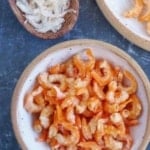
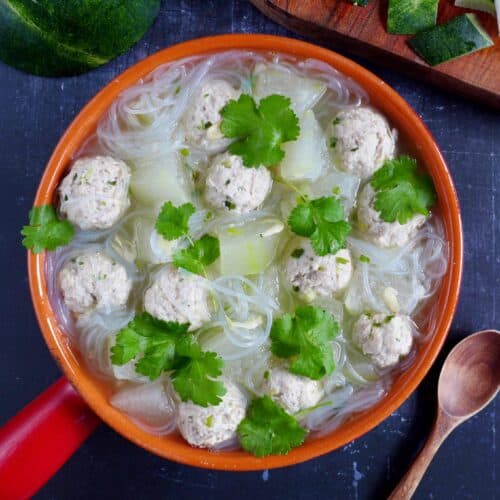
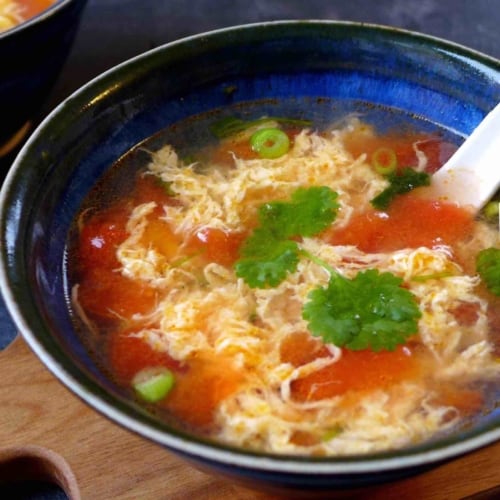
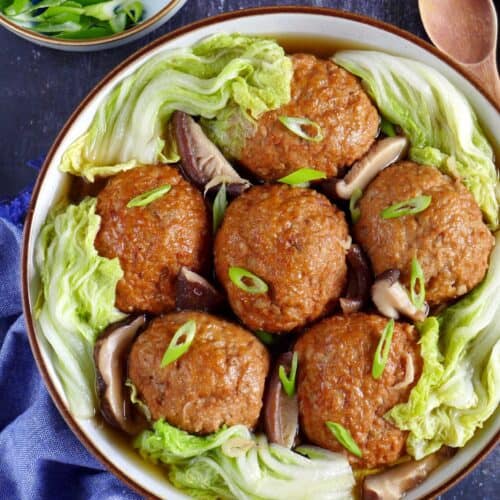
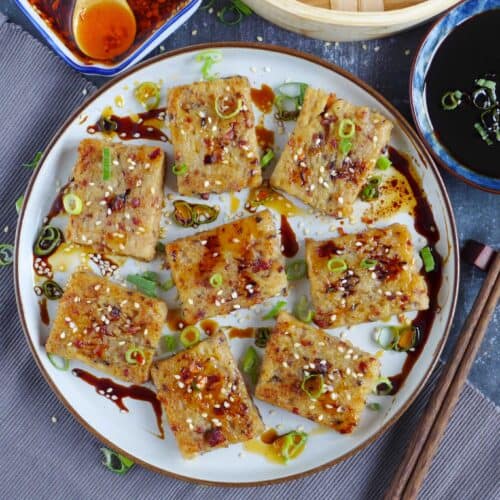
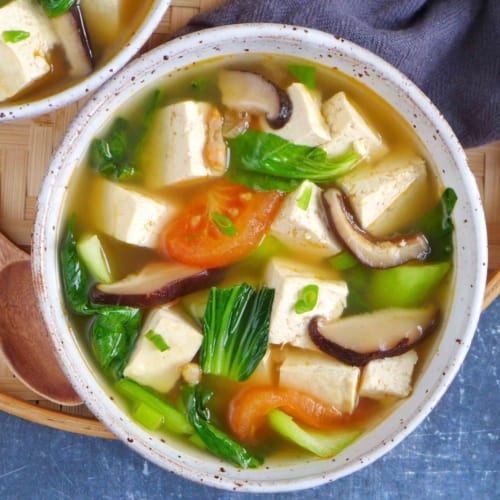
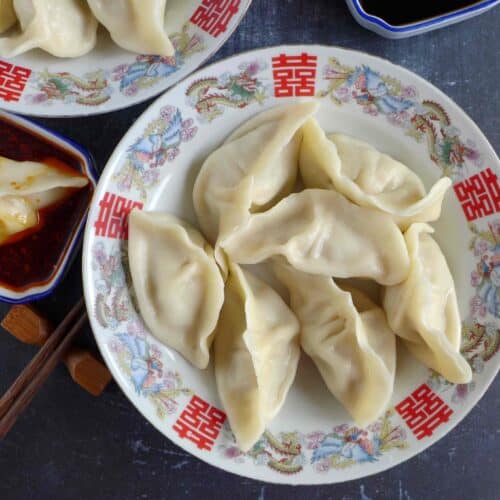
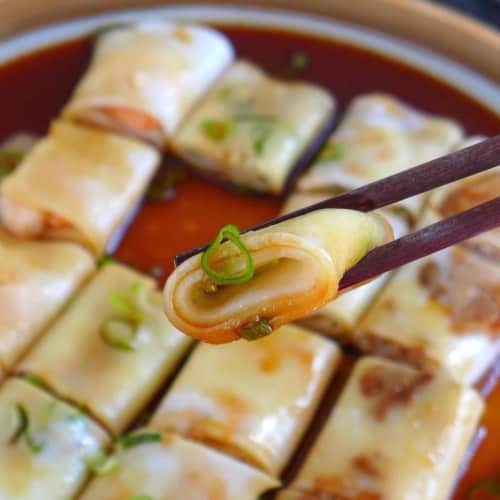
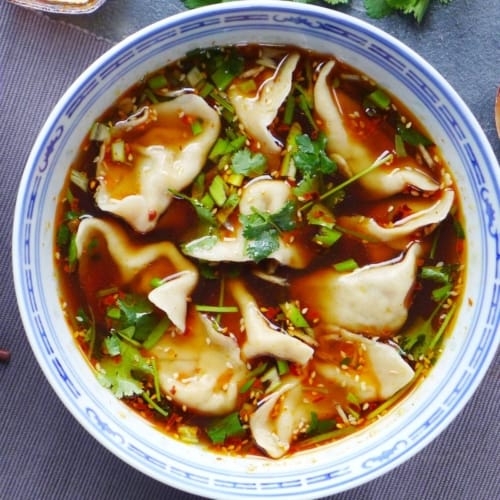
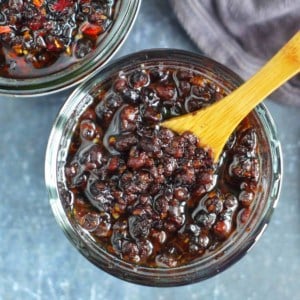
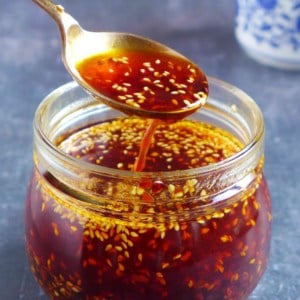
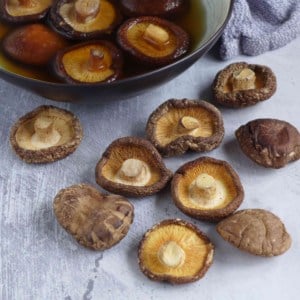
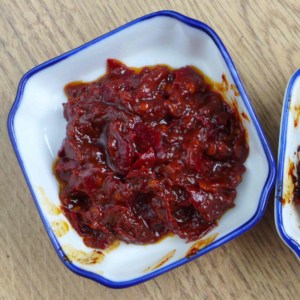
I recently got a rice cooker that makes congee and I wondered if these little shrimp might work well in a congee. If so would the process of making the congee be “soaking” enough or should I still pre-soak?
Thanks for your thoughts 🙂
Personally, I’d pre-soak the dried shrimp and add the soaking water to the rice. Happy cooking Kristy!